Play Critically was provided with a review code for this videogame. Everhood comes with a disclaimer for photosensitive players.
Everhood: An Ineffable Tale of the Inexpressible Divine Moments of Truth is a rhythm adventure videogame set in a fantastic world where magical warriors meet on sonic battlefields. Each opponent’s accompanying music is reimagined visually as a collage that flies towards the player character at the front of the screen. I play as the Red Mage, a living doll whose arm is stolen by the Gold Pig, a gluttonous king who hoards pilfered treasures. I must guide the Red Mage across the world, jumping and weaving between their enemy’s attacks to survive each soundscape, defeat the Gold Pig, and recover their arm.
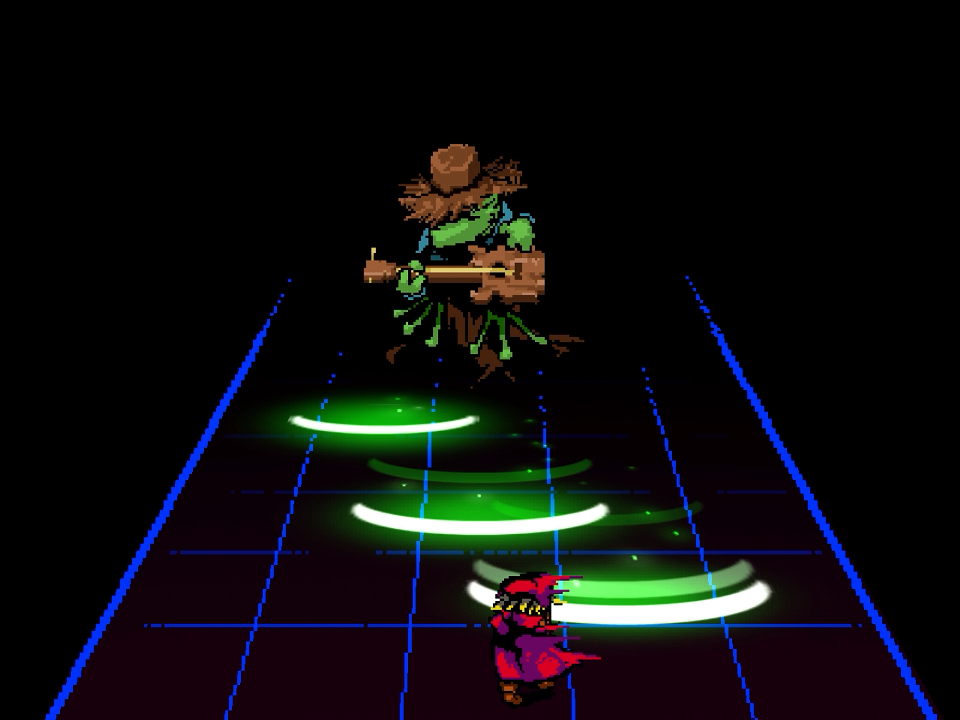
The main activity in Everhood is battling the Red Mage’s enemies who stand between them and the Gold Pig’s lair. Battles take place on the familiar “soundboard” from rhythm/music videogames. As each enemy’s song plays, shapes representing music notes fly down the board towards the Red Mage standing at its bottom. Instead of intercepting these sound-shapes to generate notes, I move the Red Mage between them, bullet-hell style, to avoid taking damage. If I can navigate the entire soundscape, the battle ends and the story continues.
Surviving a battle becomes a kind of dance. I can direct the Red Mage to jump over a sound-shape, or else shift them left and right between the five lanes to sidestep a sound-shape. If the Red Mage collides with a sound-shape, they take some damage, but that damage regenerates after a few seconds if I avoid more. I succeed when I recognize the sound-shapes that accompany the song’s current movement, sliding past the tall and narrow ones and leaping over the short and wide ones. If the Red Mage falls I am allowed to retry from the battle’s beginning, so even when songs become riotous and soundscapes dense in the world’s most obscure corners my focus remains on clearing the challenge. Even at Everhood’s hardest I am encouraged to try again instead of discouraged by a long walk back to the sight of my failure.
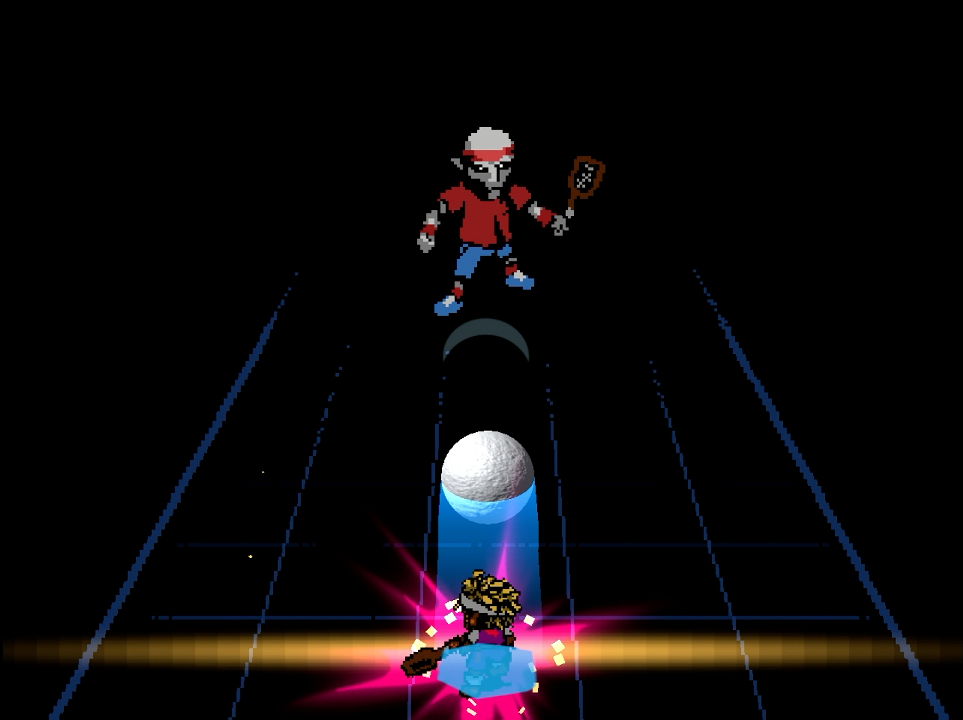
The different scenarios the Red Mage finds themself in alter the soundboard’s behavior. While cast as a sword-wielding warrior in a tabletop RPG, soundscapes have added red orbs which must be knocked back to the top of the board to damage the opponent. A near-death experience causes the graphics to bleed across lanes and the soundboard to rock and spin. Talking mushrooms in a haunted forest send the Red Mage on a drug trip, causing the soundboard to warp and flip, transforming an otherwise ambling soundscape into a daunting challenge.
All the songs I survive in Everhood are drawn from various electronic genres but with many tempos and instruments to keep things fresh. This variety is reflected in how I navigate the soundscapes. In the tutorial, a frog with an acoustic guitar strums chords to a slow, steady beat. Its strums appear as wide green bars that must be leapt over in time to the beat. When the Red Mage battles an ATM to retrieve cash to enter a nightclub the song is much faster, its melody created by buzzing electronic notes that zig-zag across the soundboard in long lines that must be alternately sidestepped and jumped over. When the Red Mage battles a goblin on a dancefloor, its song is driven by a lightning-fast drum machine that floods all corners of the soundboard with a chaotic mosaic. In fifteen minutes I experience three markedly different songs, a fraction of Everhood’s impressive electronic soundtrack.
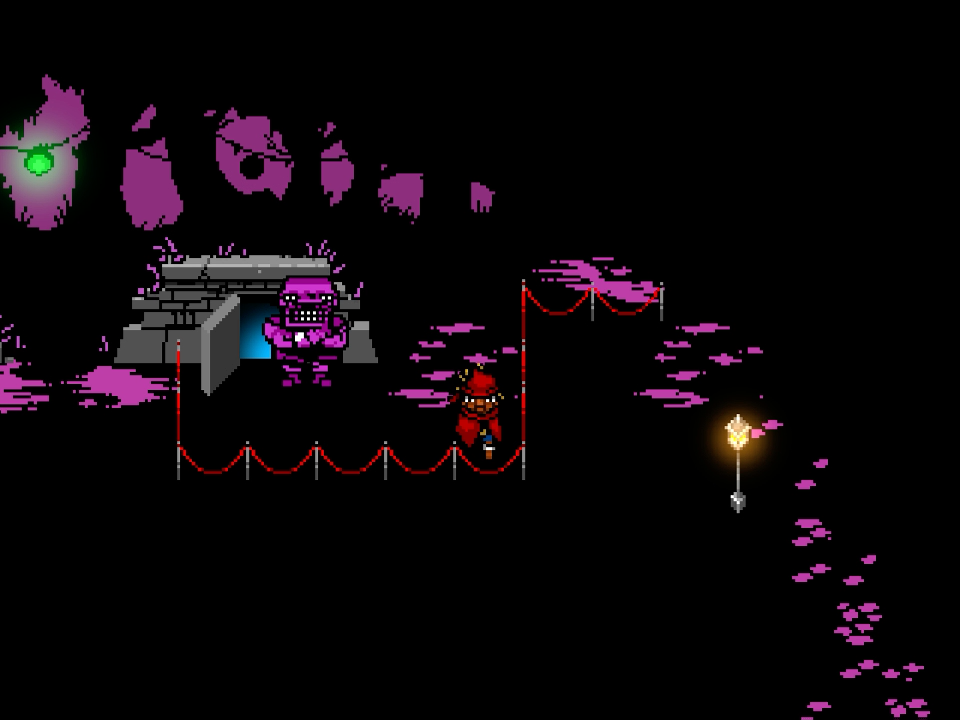
Everhood is like a half-imagined dream world. Objects and buildings exist in a black void connected by a road of scattered pebbles that stand out in the darkness like stars. The Red Mage’s journey along this road is signposted by lonely talking street lamps who double as save points. This world is inhabited by spirits and specters of many personalities. Nosferatchu is a timid vampire with a chronic sneeze and a hidden passion for videogames. Zigg is a mean-spirited and classist goblin yet still no ally of Gold Pig. The Green Mage is a gregarious and cavalier cyclops with a mercenary approach to their villainy. Everhood is a small world with a cast to match, but is distinct and imaginative.
Everhood is a mostly linear experience to start. After some introductory song-battles, the Red Mage reaches a hub filled with doors that connect all corners of the world. I am cut loose to explore these doors in my own order, but NPC chatter drives me towards the next destination and warns me if I still have things to see before I leave. There are a few puzzles to be solved but mostly I look for more opponents to fight. In about three hours I discover all the keys to unlock Gold Pig’s lair and head to reclaim the Red Mage’s stolen arm.
Once the Red Mage recovers their arm, their true purpose is revealed, the plot takes a hard turn into the existential, and its song-battles gain a new dimension. Now in addition to sidestepping and jumping over sound-shapes, the Red Mage can also catch and return them to finally fight back.
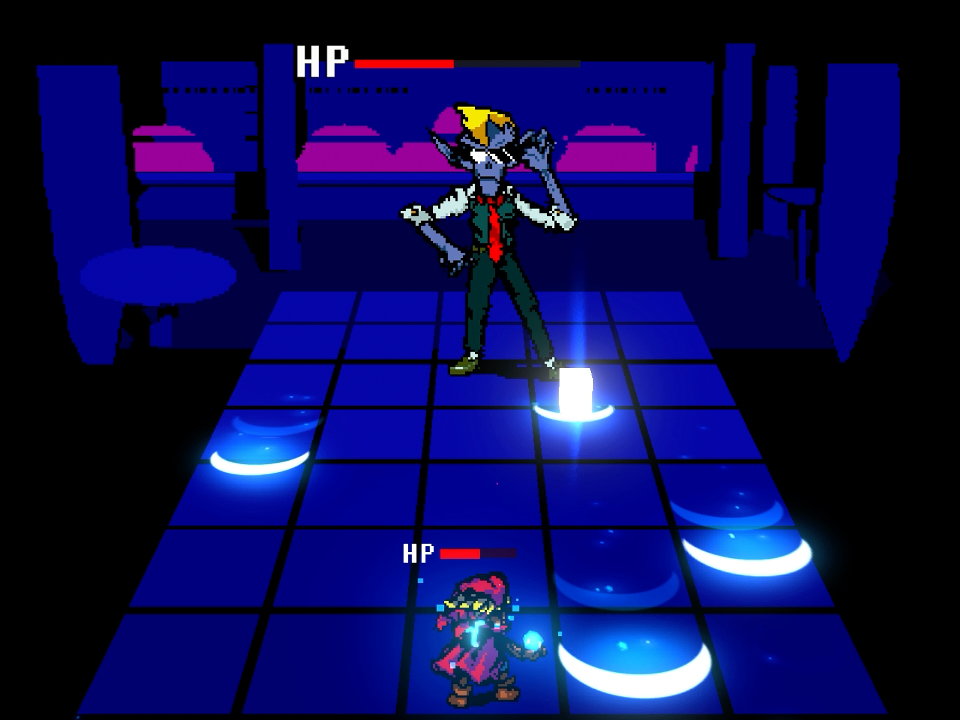
This completely transforms how I approach song-battles. It is no longer enough to survive a song, I must also navigate a soundscape skillfully enough to gather two shapes of the same color then return them to the top of the board which damages the enemy. If the Red Mage collides with a sound-shape, they lose their gathered charges. If a charge hits too many incoming sound-shapes before reaching the top of the board, the damage is interrupted. If I fail to completely drain an enemy’s hit points before the song ends, I have to try again from scratch. The precision and knowledge of a song’s soundscape needed to succeed in cranked into overdrive.
This is the point where Everhood’s world really begins to reveal its secrets. While chasing down the Red Mage’s arm I can uncover a nature spirit in the heart of a forest, open a locked chest stashed in the corner of a florist’s shop, or win a trophy in a karting minigame. The challenges these reveal seem to have no purpose until the Red Mage can fight back and the new mechanic twists these song-battles—already Everhood’s most grueling—into even more daunting challenges. Recovering the Red Mage’s arm is a leisurely, relatively easy accomplishment. Tracking down every song-battle and defeating its host outright is a true rhythmic challenge.
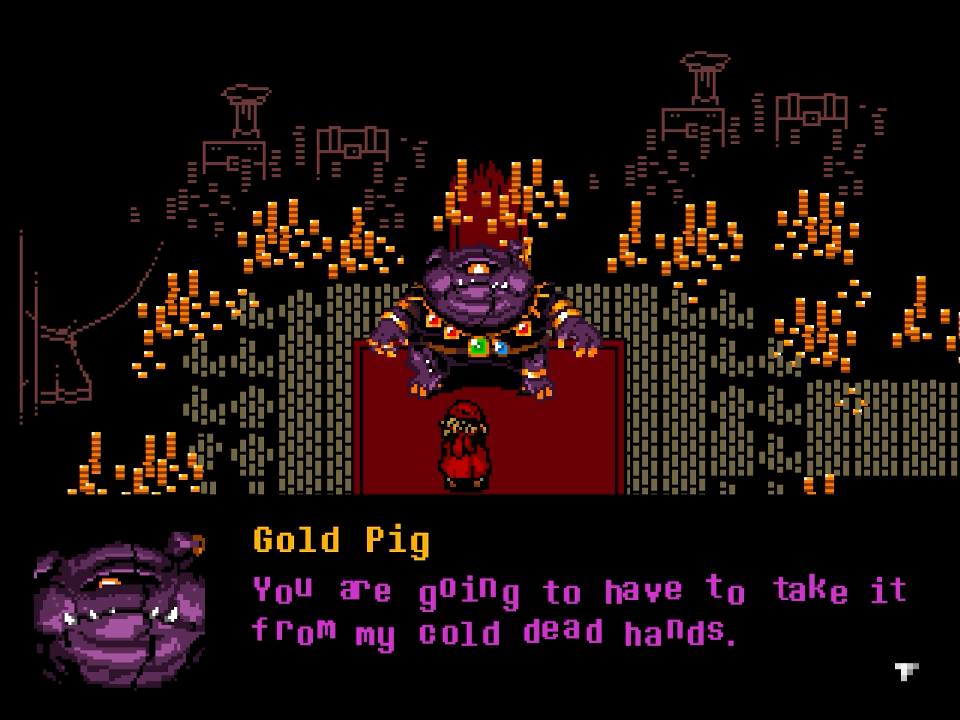
Everhood is a creative blending of fantasy tropes, rhythm-music structure, and bullet hell mechanics. Its main strength lies in its song-battles. Taking the familiar five-lane soundboards from Guitar Hero and reimagining them as musical battlegrounds is a uniquely indie risk that is executed well. Its adventure half is less compelling. The world is small, my route through it is mostly linear, requires backtracking, and what few puzzles exist are simple and require little thought or effort to solve. This might be for the best. I might otherwise find myself complaining that abstruse moon logic puzzles add too much time between song-battles, the clear star of the attraction that deserves my attention. It has flaws but Everhood is still an enticing prospect for music videogame fans looking for something new and unusual.